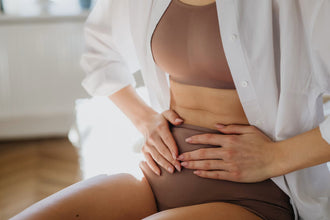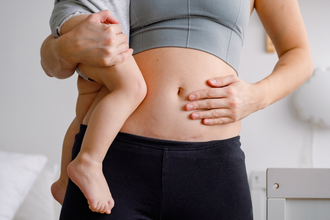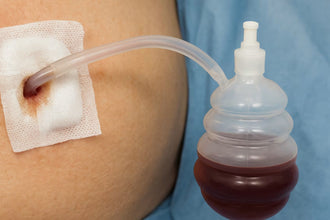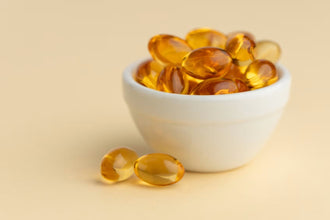
Breast Augmentation Recovery: What to Expect in the First Six Weeks
Introduction
Breast augmentation is an effective surgical intervention that is preferred by many women, but the recuperation process is very important in obtaining a satisfactory outcome. It is crucial to properly anticipate what will be experienced in the first six weeks after surgery, so that you can ensure the best recovery and minimize the chances of getting complications.
This guide will give an extensive explanation of the details regarding the healing process, followed by expert opinions on what the patients should expect and how to aid in their recovery process in an efficient manner.
Week 1: The Immediate Post-Operative Phase
The first week after breast augmentation is often the most challenging. The body’s working hard to recover from the surgery and adjust to the implants, so there’s a lot happening. This period is marked by physical discomfort and limitations, which is normal as things begin to settle.
Common Experiences in the First Week
-
Pain and discomfort: It's not unusual to feel moderate to severe discomfort in the first few days. Prescribed pain medications help manage this, but some heaviness or tightness in the chest can linger. That tightness often feels similar to sore muscles after a hard workout.
-
Swelling and bruising: Inflammation is at its worst during the first 48 hours but starts to decrease after that. Some people find bruising around the surgical area, which is a natural part of healing. Icing the area, as directed, can help reduce this, though the swelling can take a while to fully go down.
-
Reduced mobility: The body naturally tries to protect the surgical site, so upper body movement can be limited. There’s often soreness in the arms, shoulders, and neck, making it tricky to lift anything heavy or reach overhead. A lot of rest is needed to avoid putting strain on the chest.
-
Dressings and drains: Some surgeons use drains to help avoid fluid buildup, which are usually removed by the end of the week. Dressings are kept dry and in place to protect the area while the skin starts knitting together.
Recommendations for Week 1
| Experience | Timeframe | Management Tips |
|---|---|---|
| Pain and Discomfort | First few days | Take prescribed pain medications on schedule |
| Swelling and Bruising | Peaks within 48 hours | Use ice packs as directed to reduce swelling |
| Reduced Mobility | First week | Rest and avoid heavy lifting or reaching |
| Dressings and Drains | Removed by end of the week | Keep dressings dry and follow wound care tips |
- Keep up with medications: Take all prescribed medications, including antibiotics, on time. Painkillers will help manage discomfort.
- Wound care: Keep the surgical area clean and dry, following the surgeon’s instructions closely.
- Rest: Rest is critical at this stage. Sleeping in an elevated position reduces swelling and discomfort.
- Stay hydrated and eat well: A healthy surgery recovery diet rich in vitamins and minerals supports the body’s healing process. Plenty of fluids help keep things moving smoothly.

Week 2: A New Phase of the Healing Process
By the second week, things are looking up. The worst of the pain usually passes, and the body progresses to the next stage of recuperation. Some soreness and swelling may, however, continue.
Key Changes in Week Two
-
Reducing pain and swelling: Pain levels markedly diminish, and many transition from prescription analgesics to over-the-counter remedies. The remaining edema is usually mild.
-
Improved mobility: Everyday tasks become easier as the body adjusts, but any heavy lifting or stressful activities should be avoided. Moving around helps prevent issues like fluid buildup, but it’s important not to overdo it.
-
Stitches and appearance: Stitches, if non-dissolving, are removed in this period. The breasts might still appear high, tight, or asymmetrical, but that’s part of the normal healing process. The implants need time to settle into place.
Recommendations for Week 2
- Wear compression garments: The surgeon will likely recommend wearing a surgical bra to support the breasts and help reduce swelling.
- Light activity: Gentle stretching or passive movements can be introduced, following the surgeon’s guidelines, to maintain flexibility without straining the chest area.
- Monitor for infection: Keep an eye out for signs of infection like increased redness, inflammation, or discharge. If anything seems off, it’s best to get in touch with the surgeon.
Weeks 3-4: Resuming Regular Daily Activity
The body is now often well into its mending process. Energy levels improve, and routine activities resume gradually. However, this is still a fragile stage that demands vigilance to avoid setbacks.
Important Developments in Weeks 3–4

-
Increased Energy: Most folks feel better and can resume light daily activities. It's still important not to hurry back into anything too strenuous, especially when it comes to the chest.
-
Soft tissue recovery: The tissues around the implants relax, making the breasts feel softer and more natural. This process, commonly referred to as "fluffing," takes time and varies from person to person.
-
Scar care: The emphasis switches to scar maintenance, as healed skin becomes more visible. Products such as silicone sheets or gels may be used to reduce scar visibility.
-
Emotional changes: Many people go through a rollercoaster of emotions during this time. Concerns regarding the final look are frequent, but keep in mind that full results take time to achieve.
Recommendations for Weeks 3-4
- Light cardio: Walking or other gentle cardio exercises can be progressively introduced. Before starting any new activity, consult your surgeon.
- Start scar management: Use silicone sheets or gels as directed to improve the look of scars.
- Make follow-up appointments: Keep regular check-ups with the surgeon to monitor progress and address any concerns.
Weeks 5-6: Preparing for a Return to Normalcy
By weeks five and six, most people are getting back to their usual routines. Physical activity can be increased, but there’s still a need to be cautious with more intense exercises.
Key Changes in Weeks 5-6
| Activity Type | Examples | Guidelines for Safety | Benefits of Activity |
|---|---|---|---|
| Low-Impact Exercises | Yoga, Stretching | Avoid poses that put pressure on chest muscles | Improves flexibility and muscle tone, aids in gentle recovery |
| Light Cardio | Walking, Light Cycling | Start slowly and build up intensity gradually | Enhances circulation, reduces risk of blood clots |
| Strength Training (Lower Body) | Leg presses, Squats without weights | Focus on lower body only, avoid upper body or chest exercises | Helps maintain muscle strength without affecting chest area |
| Scar Management Exercises | Gentle massaging around scar area | Use recommended creams or oils, avoid harsh movements | Reduces scar tissue buildup, improves skin elasticity |
| Breathing and Relaxation | Deep breathing exercises, meditation | Perform in a calm environment, do not strain | Reduces stress, promotes mental well-being, and aids recovery |
-
Gradual return to exercise: Low-impact activities, like yoga or stretching, can be added at this stage. However, exercises that put pressure on the chest muscles should still be avoided until the surgeon gives the all-clear.
-
Final implant position: By this point, the majority of swelling should have subsided, and the implants will settle into their final position. The breasts will feel softer and more natural, and the earlier tightness or elevated position of the implants should no longer be an issue.
-
Scar maturation: Scars will start to fade, changing from red to lighter shades. Though they won’t disappear entirely, they’ll become less noticeable over time with proper care.
-
Watch for late-onset complications: While rare, late complications like capsular contracture or implant displacement can still happen. Keeping an eye on any unusual changes, such as increased firmness or discomfort, is important.

Recommendations for Weeks 5-6
- Consult before resuming high-impact activities: High-impact exercises, like weightlifting or running, should only be reintroduced with the surgeon’s approval. It's best to avoid anything that might put too much strain on the chest muscles.
- Maintain healthy eating and hydration: A balanced diet and plenty of fluids help keep the body strong as recovery continues. You can also consider getting the necessary healing nutrients from a breast augmentation recovery supplement.
- Stay alert for changes: Any unusual symptoms, such as swelling or redness, should be reported to the surgeon immediately.
Continuing Care Tips
Even if the most severe phase of the recovery has passed, continued care is required to ensure long-term success. Breast augmentation results can last for years, but keeping them requires paying attention to a few important areas.
-
Scar management remains important beyond the six-week mark. Scars will continue to mature over several months, and using silicone-based products as recommended can help reduce their appearance. Even after the scars fade, it’s good to keep protecting the skin from the sun to avoid darkening.
-
Routine self-checks are also a good habit to develop. Assess the implants for any changes in size, shape, or texture. If anything seems off, it’s best to have it checked by the surgeon. While complications are rare, catching any issues early can prevent bigger problems down the line.
Conclusion
After having breast augmentation surgery, the way you heal is very important to make sure you end up happy with the results. It's all about knowing what happens during healing, starting right after surgery until you can get back to your regular life. This means understanding what to expect and doing the right things to help your body heal.
Listening to your doctor's advice, taking good care of your surgery site, handling pain well, and slowly getting more active are key for a smooth healing process.
References:
https://www.ncbi.nlm.nih.gov/pmc/articles/PMC9025535/
https://www.ncbi.nlm.nih.gov/books/NBK470443/
https://www.ncbi.nlm.nih.gov/books/NBK537065/
https://www.ncbi.nlm.nih.gov/pmc/articles/PMC7950049/
https://pubmed.ncbi.nlm.nih.gov/18453989/
General Disclaimer: All information here is for educational purposes only and is not meant to cure, heal, diagnose nor treat. This information must not be used as a replacement for medical advice, nor can the writer take any responsibility for anyone using the information instead of consulting a healthcare professional. All serious disease needs a physician.















